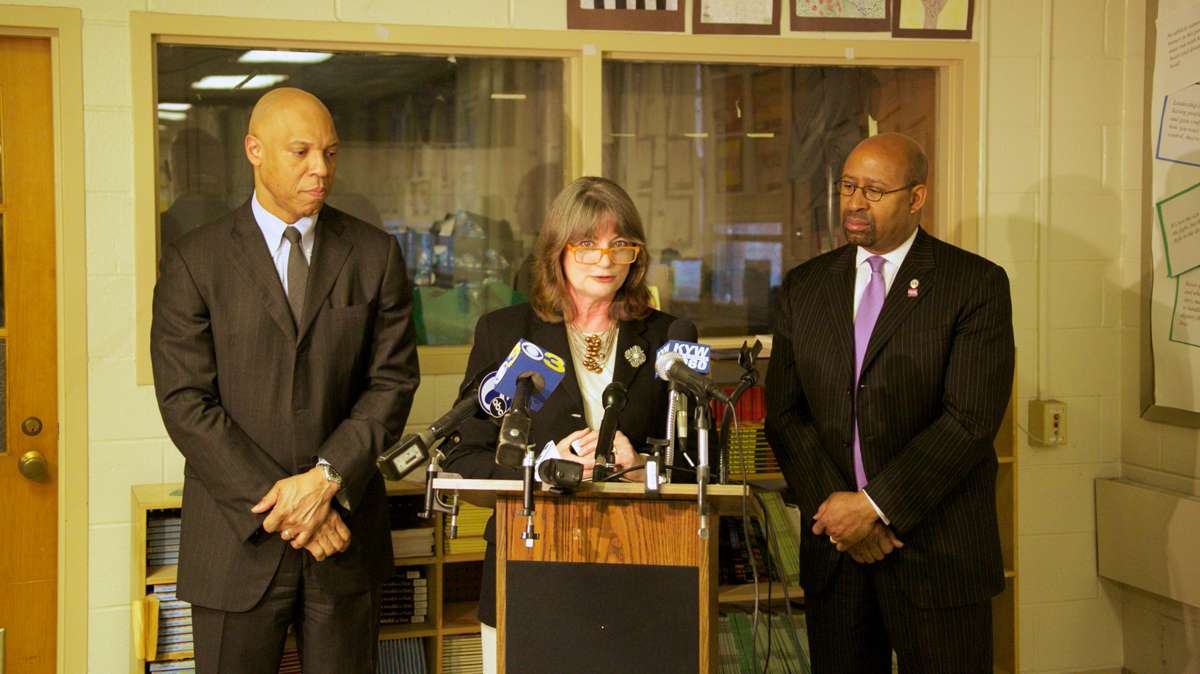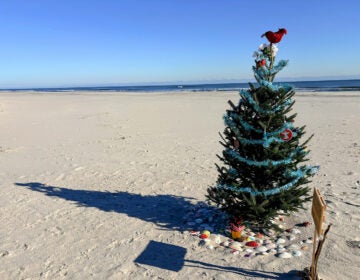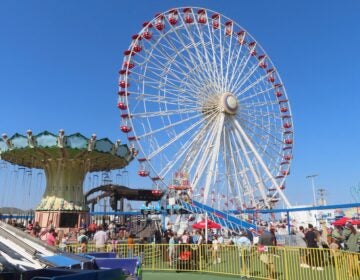Trenton exhibit highlights Newark’s growing arts scene
If you haven’t been to Newark lately, there’s a renaissance going on. And as with so much urban renewal, the catalyst is the arts. There’s the New Jersey Performing Arts Center, of course, but since the 1980s, Aljira, A center for Contemporary Art, has become a major force.
The New Jersey State Museum is presenting Aljira at 30, Dream and Reality, a major exhibition on the museum’s first floor gallery, through Sept. 28. There are many artists familiar to capital-area art enthusiasts – Grace Graupe-Pillard, featured at the Gallery at Rider University a few years ago; Trenton-area fine art photographer Aubrey Kauffman; Judith K. Brodsky, whose work has recently been seen at the Arts Council of Princeton, Historical Society of Princeton, New Jersey Printmaking Center, and Bernstein Gallery, among others; Dahlia Elsayed, whose writerly canvases were recently featured in the State Museum’s fine art galleries; Trenton legend Mel Leipzig; as well as internationally known artists Willie Cole and Ming Fay, both of whom have recently been featured at Grounds For Sculpture. But it is the opportunity to discover new artists that makes this exhibition stand out.
Dulce Pinzon, a Mexican-born photographer, underscores quiet heroism with portraits of immigrant workers dressed in superhero costumes going about their business. Cat woman is babysitting, Spiderman is washing windows – they are doing menial work with great pride and sending their earnings back to family. To Pinzon, these people are the real superheroes.
Camden-born Mickalene Thomas, educated at Pratt and Yale, recently had a solo exhibition at the Brooklyn Museum. Recipient of Aljira’s 2010 Timehri Award for Leadership in the Arts, Thomas has four white panels glittering with rhinestones, showing the detail and texture of braided and corn-rowed hair, revealing her complex vision of African-American beauty.
Helen Stummer makes intimate photographs of people from Newark’s Central Ward. The octogenarian has been called a visual sociologist.
“I’ve always thought of Aljira as a laboratory,” says the State Museum’s Curator of Fine Arts Margaret O’Reilly. “Our museum is a more traditional institution, so we look to smaller museums and galleries and cooperative spaces to find new ideas and trends with universal appeal that will still work in 100 years, and Aljira also has that long view. There are very few people outside North Jersey who know about Aljira.”
O’Reilly attends the Aljira auction every year, a major fundraiser for the Newark institution, with donations from emerging artists. “We have purchased from that auction because it gives access to a diverse group of artists, and at good prices.”
From the beginning, Ajira has been a catalyst for the socio-cultural ecology of the city, assuming responsibility for providing an arts experience for everyone. Aljira seeks to provide active engagement for Newark teens and their families through its program “Culture Creators.” “Emerge” offers professional development and exhibition opportunities for working artists, and “Bending the Grid” offers opportunities for accomplished artists 65 or older who may be underappreciated.
The name Aljira comes from the Australian Aborigines, referring to a utopian dreamtime. It all began when a group of artists were looking to share inexpensive studio space. Beginning on the fourth floor of a building with no elevator or air conditioning in a marginal neighborhood of Newark, the non-profit multicultural center focused on contemporary art. With grants from the City of Newark, the New Jersey State Council on the Arts, the National Endowment for the Arts, the Prudential Foundation, the Geraldine R. Dodge Foundation and Johnson & Johnson, among others, Aljira was soon serving hundreds of artists and cultural audiences. Not only did Aljira present exhibitions but these were enhanced with performances, lectures, poetry readings, jazz and a critic/artist-in-residence program – giving a much-needed boost to the development of Newark’s downtown cultural district.
“After the 1960s race riots, Newark never came back,” says O’Reilly. “Founders Victor L. Davson and Carl E. Hazlewood moved into these areas and helped revitalize them.”
“Growing from those early grass roots days into the well-respected institution Aljira has become has not always been easy,” continues O’Reilly. “The idealism of the early days naturally pushes up against the pragmatic concerns that all arts organizations, particularly non-profits, face every day. This quality and innovation has made Aljira a vital resource for more traditional institutions like the State Museum. The Center is always in the forefront of introducing or re-introducing artists to the Garden State and surrounding area, and curators look to them for indications of trends arising within the visual arts community.”
By the 1990s, Aljira expanded programs in education and professional development. But grants alone cannot sustain an arts organization, and Aljira created a graphic design studio that provided earned income. There was public art, traveling exhibitions, partnerships with schools and civic organizations, collaborations with other arts organizations and awards from the New Jersey Governors Awards, the State Council on the Arts and others.
By the 1990s, Trenton Artists’ Workshop Association artists Judith Brodsky, James Colavita, Jamie Fuller, Aubrey J. Kauffman, Harry Naar and others showed at Aljira, while Aljira artists Charles Barrow, Sonia Chusit, Grace Graupe-Pillard, Giovanna Cecchetti and othersshowed at the Trenton City Museum at Ellarsie. Poet, playwright and Black Arts Movement icon Amiri Baraka made his debut as a visual artist at Aljira in the 1990s and celebrated his 75th birthday with a second solo show in 2008. (Baraka died as Aljira’s 30th-anniversary exhibition was in the planning stages).
Aljira presently occupies 6,000 square foot space at 591 Broad St., near NJPAC, the Newark Museum, the New Jersey Historical Society and Gallery Aferro.
“There’s an energy the arts bring,” says O’Reilly. “It’s happening here in Trenton, too.” Parallels can be drawn between Newark and Trenton, and how arts groups such as the SAGE Coalition are restoring nearby East Hanover Street.
Aljira at 30 is on view at the New Jersey State Museum through Sept. 28.
_________________________________
The Artful Blogger is written by Ilene Dube and offers a look inside the art world of the greater Princeton area. Ilene Dube is an award-winning arts writer and editor, as well as an artist, curator and activist for the arts.
WHYY is your source for fact-based, in-depth journalism and information. As a nonprofit organization, we rely on financial support from readers like you. Please give today.











